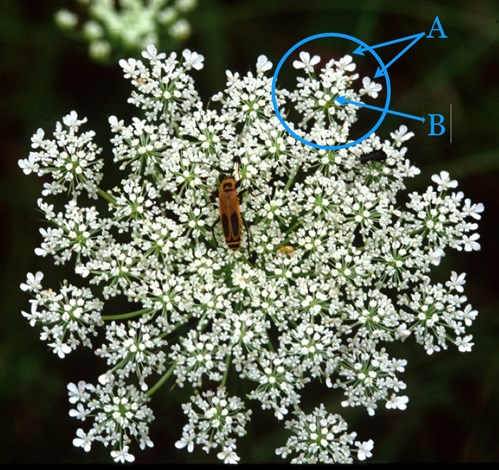Queen Anne's Lace
Daucus carota
The species from which growers have selected individuals with
larger, sweeter, and more deeply colored roots -- we call those
carrots.
This one is being visited by a leatherwing beetle, a beneficial
insect whose immature stages prey on other insects such as aphids
and scale.

The flowers are arranged in a form called an umbel, in which the
individual flower stalks (peduncles) arise from approximately the
same point on the stem, and the center of that cluster is youngest,
blooming last. Queen Anne's lace is a compound umbel, with each
"ray" of this lacy umbel forming its own umbel.
Below: We've circled one umbel to point out that
the outer ring of flowers in the umbel is in bloom (A) while the
center flowers (B) are still in bud. The order of bloom holds for
all the umbels in a compound group, too, so the central umbel of
the compound arrangement is still in tight bud and a bit pink as
the outer umbels begin to bloom. The overall appearance can be of
lace around a pink-ish center. This gave rise to the fanciful
common name, as the flower is said to be the beheaded English Queen
Anne Boleyn's lace ruffle around the stump of her neck.
